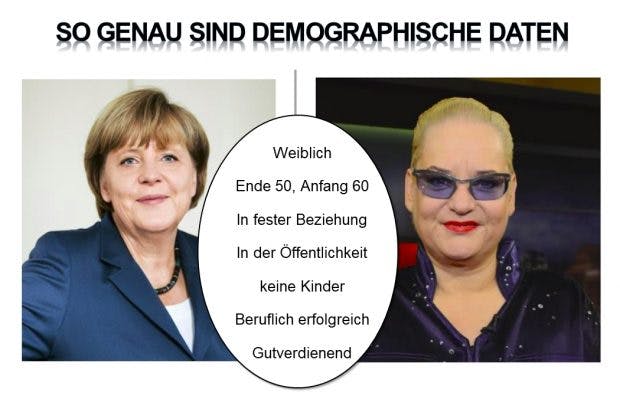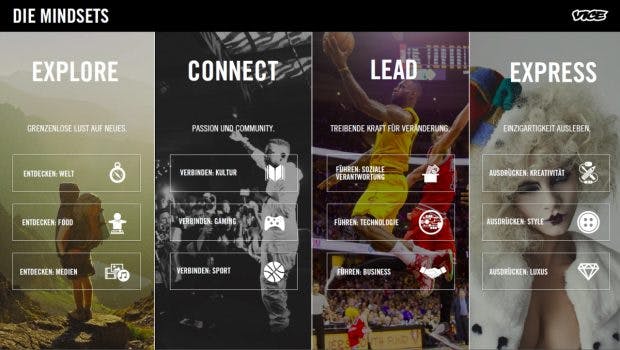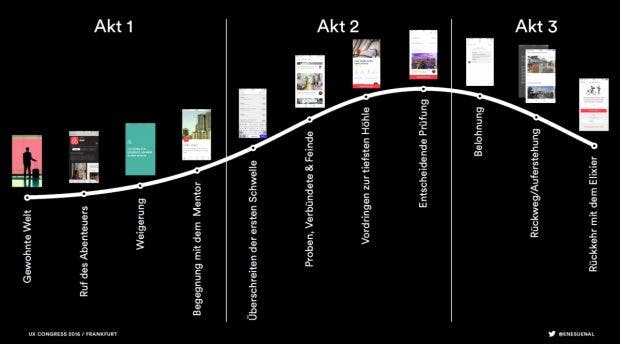46 percent of German companies are planning to set up a content marketing strategy – a sensible decision when you consider that over two thirds of consumers find out about products primarily on the Internet.
The expectations of consumers are clear: 61 percent would like to be made aware of products and companies in their online research via relevant content instead of disruptive advertising. 84 percent of potential customers even leave the websites they visit if there is excessive advertising.
There are more reasons why it makes sense to implement a content marketing strategy in the company. Three quarters of online users have more confidence in companies if they provide high-quality, helpful background information. Those who create and market their own content contribute to the generation of visitors via the organic search engine channel, to building up their own expert status, to generating the links that are still essential for the Google ranking and to expanding brand awareness within the target group. In addition, companies that work independently and sustainably when ranking in the search engines are releasing themselves from the dependence on expensive clicks, such as B. Google Adwords.
The figure shows how short-term pay-per-click ads are linked to the invested budget, while content marketing represents a cumulative channel. As plausible as these arguments in favor of content marketing sound, and as much as there is talk about it, many companies are still unaware of how and where to start. We present five practical recommendations for action with which a content marketing strategy can be developed and implemented as easily as possible:
1. Research: How do I find suitable content?
Content campaigns primarily deal with an existing demand in the relevant target group. The aim is to satisfy the users of Internet search engines such as Google, Bing or Yahoo directly in their search interests. This requires an in-depth study of the needs and problems of potential customers on the basis of their most frequent search queries, i.e. researching relevant topics, search terms and questions. If you know the search terms (keywords) of the target group, you can produce tailored content, such as B. helpful, topic-related product and service information, instructions, how-to articles, FAQ directories or checklists.
If you want to achieve a higher online visibility of the company website, you have to weigh the search volumes between individual keywords and have current developments on the topic on your screen: What is the current demand, what are related search queries, how high is the interest in Google Trends or the others Search engines? On which other pages, be it a large online magazine or a private blog, do people prefer to talk about my topic?
The analysis of the content of competitors who are already ranking successfully for the relevant keywords can also serve to inspire and optimize your own content.
Research forms the basis for creating the best content on a particular topic, because only that is likely to:
- represent a large proportion of long-tail demand,
- has the chance to generate good links,
- can be actively distributed via online PR, depending on the presentation.
2. Planning: How can I keep an eye on projects?
It makes sense to divide the content marketing strategy into three categories and define different goals:
- The systematic development and publication of requested and target-group-relevant content within your own blog, magazine or guide. The aim is to increase the visibility of certain search terms, the positions on Google and the organic visitors.
- The implementation of entertaining and particularly informative campaigns such as B. Videos, infographics, expert interviews or the publication of extensive blog posts. The aim of this content can be seeding, i.e. distribution on other relevant online media, the success of which can be measured in the form of generated links and mentions on other websites or the reach in social media.
- The creation of content products (including content assets) such as B. white papers, webinars or newsletter series. In addition to the aspects mentioned above, the aim should also be that visitors can be converted – e.g. B. through a download, a subscription or even a purchase.
The planning stage of the content campaign also includes the allocation of responsibilities within the team: who does the research, who writes the first draft, who proofreads it, who gives the approval, who then takes care of the distribution and maintaining contacts? Since successful content marketing is teamwork, a central communication platform should be created and an editorial plan should be set up and coordinated with all parties involved.
The traffic potential of a content idea can serve as the basis for prioritization. To do this, look at the search volumes of the associated keywords and the pay-per-click prices of these keywords on Google Adwords. The higher the search volume and the price-per-click with Adwords, the higher the demand in the search engine and thus the potential of the content. If you compare this potential with the cost and time required to create the respective content, you can easily calculate whether it is worthwhile for the company to research and create the content.

3. Creation: Which content works best?
Once you have decided on one or more content ideas validated by keyword research, the next step is to create the most personalized and relevant content possible. This requires someone who can present boring or complicated processes and instructions in a fresh, lively tone in order to attract and keep the reader’s attention. The same applies to the creation of other media formats, such as infographics, white papers, tutorials, case studies or videos.
The best way to support the creator of the content is to add interesting resources to the content idea. That would be B. Thoroughly researched sources on the topic in the form of URLs or documents (PDFs) to enrich the text with background information. In addition, an author briefing must be prepared with all relevant framework conditions (style, structure, target group / persona, etc.).
Every page on the website should have a direct or implicit call-to-action that is directly related to the content of the page.
In order to enhance content within the above-mentioned content marketing goals, it can make sense to use aids such as the “W-question research”, a “WDF * IDF analysis” or the “analysis of internal links”.
4. Distribution: How do I generate more reach?
Once the author has submitted the finished article, after a final approval by the content manager, the publication can begin. Attention can only be achieved through a targeted distribution of the content to the target group. The owned media channels, such as B. Facebook, Twitter or newsletter, on the one hand and the earned media channels on the other. The following websites should be researched, listed and informed about the exciting new content:
- Pages that refer to similar content from the competition,
- Blogs with brand mentions and backlinks for my competition in the same subject area,
- Websites that fit my content thematically.
This is a particularly time-consuming process that can be managed using constantly updated Excel tables or dynamic, less time-consuming contact management software solutions. The effort is worthwhile in any case, because the chances increase that the high-quality content will be picked up, discussed and recommended by influential media and multipliers from the topic area. These are signals that the search engine recognizes (in the form of links, visitor numbers, brand mentions, social signals, etc.) and rewarded accordingly with higher placements for the relevant keywords.
5. Analysis: How can successful content be measured?
Ongoing monitoring determines the success of the content researched, created and shared in this way. In the first step, this can be the current rankings, the increasing number of backlinks, and social media mentions. In the second step, it should be checked whether the organic visitors (e.g. via Google) and the referral traffic are increasing. A good and meaningful measure of the success of a content can again be the representation of the traffic in Google AdWords CPC value. To do this, it must be analyzed which search terms generated which number of visitors per month and how the respective CPC prices on Google AdWords are set for this. In this way, a content marketing ROI can be quickly identified and optimally reported internally and externally.
But no matter how much visibility you build, the conclusion on the target page on which the content was published must be clear. During the reading process or at the latest at the end of the reading process, the website visitor should receive a request for action or a recommendation that takes them further – e.g. B. to download a larger content resource for which he leaves his contact details. This can be a white paper, a presentation, a webinar, an entry for the newsletter or something similar. You convert the attracted prospect to a lead that the company’s product and service recommendations will later reach.
In order to be in the picture about the far-reaching effects of larger content campaigns, it is advisable to implement various monitoring processes in the follow-up. So you should regularly check whether you are ranking for the previously defined keywords with the published content or whether other relevant keywords are included in the keyword monitoring.
Following the implementation of content campaigns, controlling and process optimization begin. Regular reports on links, brand mentions and ranking developments are just the beginning and should be repeated at least after each content campaign.
Once you have understood the processes and created best practices, many of the work processes can be automated and greater efficiency in workflow and team performance can be achieved.
Conclusion
Content marketing makes it possible to open up new and sustainable visitor channels that do more than just perform, are not always directly linked to a budget and offer unique selling points in communication. Creativity, expert knowledge and a strengthening of the brand online play an essential role in this. New performance campaigns may help meet the quarterly targets. Content marketing helps to grow continuously and sustainably over the next few years via the online channel.













